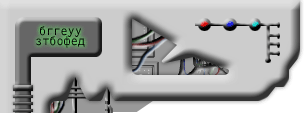1930 Gauley Bridge Disaster
Greg Fickey
The
tunnel began in the 1930’s during the Great Depression. Rinehart and Dennis
Co. were the contractors for the New- Kanawah Power Company. They were responsible
for blasting and drilling through two mountains east of the Gauley Bridge. The
New- Kanawah Power Company soon disbanded after the completion of the tunnel in 1934 because of the 476 dead and the 1500
doomed workers. The workers had to demolish rock that had a high rate of silica;
some rocks had up to a 99.44 percent content. The employees of New-Kanawah Power
Company never actually seen the mine or the particles of dust inhabiting the air. One
account said that the dust was so thick that a 48-ton Locomotive with headlights could not be seen from five feet away (Peoples).
476 workers died of silicosis
and 1500 contracted the disease in the following years. Silicosis is a respiratory
disease caused by a buildup of silica particles in the lungs. “Silicosis has become less common since the Occupational
Safety and Health Administration (OSHA) created regulations requiring the use of protective equipment, which limits the amount
of silica dust workers inhale.(3)”
National Institute for
Occupational Safety and Health has a website dedicated to silica and how to prevent it, and how to determine if you have the
symptoms. It is listed in the references attached. A few tips included are:
- Be
aware of the health effects of breathing air that has silica dust in it.
- Avoid
working in dust whenever possible.
- Know
what causes silica dust at your workplace.
Refrences:
- http://www.safetyxchange.org/financing-safety/the-gauley-bridge-tunnel-disaster
- http://historymatters.gmu.edu/d/5089/
- http://www.nlm.nih.gov/medlineplus/ency/article/000134.htm
Bhopal Disaster
The disaster took place
at a pesticide plant in Bhopal India when a catastrophic gas leak disabled 150,000 people.
This disaster is now known to be the worst industrial disaster in history. 27 tons of methyl isocyanate and other deadly gases were released on Bhopal. None of the six safety systems
at the plant were functional, and plants documents proved the company designed the plant with “unproven” and “untested”
technology. The Union Carbide pesticide plant is still affecting local residents. Abandoned chemicals are now polluting the drinking water and have poisoned 22,000
people.
Union Carbide was obliged to install safety systems in the factory, but obviously failed to do so. To save money Carbide did not push safety because it would interfere with production, also another budget
cut went to safety systems.
This was a failure of the Union Carbide company. To make a profit lives
were sacrificed, it is also a failure by the U.N. and organizations like Green Peace.
People are still being poisoned and they have not stepped in to help clean up the mess.
Reference:
- http://www.studentsforbhopal.org/WhatHappened.htm
Related Disasters
Hawks Nest Tunnel Disaster
This was a hydroelectric
project that took place near the Gauley Bridge incident in West Virginia and is considered to be one of Americas worst industrial
disasters. The tunnel was built to divert the stream so the construction of Gauley
bridge could continue. During the construction of Hawks Nest miners were asked
to collect the silica from the rocks to be used in the processing of steel. The
workers were not provided with any type of safety equipment during the mining process.
A congressional hearing placed the death toll at 476 workers perished from Silicosis.
Reference:
Georgia Sugar Refinery Explosion
In 2008 in Port Wentworth
Georgia an outdated refienery a dust explosion occurred. It claimed the lives
of 13 people and injured 42. The French Liberty Ship the GrandCamp was loading its containers of ammonium nitrate fertilizer when some crewmen noticed a fire between the
hull and the cargo holds. A water hose was lowered, but the water was never turned
on. The captain of the ship ordered not to use water to douse the flames in fear
of dangering the cargo. He ordered to close the hatches and turn on the steam
system. The growing intensity of the flames and pressure from the steam caused
the ship to explode. A mushroom cloud exploded 2000 feet into the air knocking
two planes out of the sky. Onlookers were slaughtered by steel shrapnel, firefighters
were killed by the pressure and heat, and at a nearby plant 145 workers perished.
Reference:
- http://www.local1259iaff.org/disaster.html

